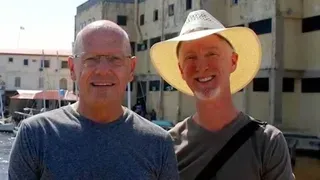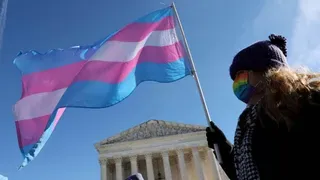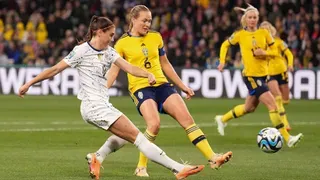December 17, 2014
Secretive Groups Poured $25 M Into State Elections
Kilian Melloy READ TIME: 3 MIN.
Shadowy outside groups broadcast an estimated $25 million worth of political ads on local TV stations with a goal of shaping state-level elections this year, and their full roster of donors is unlikely to ever be known, according to an analysis released Wednesday.
While the $25 million is a small slice of the $850 million spent on ads in statewide races, the amount is still almost twice what outside groups shelled out during the last midterm elections in 2010. The Center for Public Integrity analysis also showed that the secretive outside groups were quite successful, exceeding the victory rates of groups that disclose their donors.
Overall, mysterious groups ran twice as many ads as they did in 2010, the first election after Supreme Court cleared the way for the ultra-rich, corporations and unions to quietly bankroll campaigns through anonymous groups that form and disperse without any meaningful disclosure. As a part of the total advertising landscape, roughly 40 outside groups doubled their share of all advertising in state races.
For instance, the utility-backed Save Our Future Now spent $1.4 million on television ads against a Democratic candidate for the Arizona Corporation Commission, which regulates utilities. Ads criticizing Sandra Kennedy ran almost 1,400 times.
In that state, almost 1 in 7 ads was sponsored by groups that do not disclose their donors.
Nationally, those groups got their desired outcome in 63 percent of the races where they ran ads. All independent groups, including those that disclose donors, prevailed less than 50 percent of the time when they ran ads. The overall victory rate for advertisers - candidates and super PACs that disclose their donors, as well as secretive outside groups that do not - was 51 percent, according to the Center for Public Integrity's analysis.
The nonpartisan Center for Public Integrity reviewed data about political advertising on national cable and broadcast television in all of the country's 210 media markets. The organization used research from Kantar Media/CMAG, which tracks political advertising and offers a widely accepted estimate of the money spent to air each spot.
These figures only represent part of the money spent on political advertising. They do not include the money spent on ads on radio, online and direct mail, as well as television ads on local cable systems or the cost of producing the messages. That means the total cost of spending on political ads for state offices is likely significantly higher.
Even so, the Center for Public Integrity's analysis captured the ways some politically minded nonprofit groups can shape state elections, much like national groups such as the conservative Americans for Prosperity or the environment-minded League of Conservation Voters.
The state that saw the most ads from opaque groups was Kansas, where Republican Gov. Sam Brownback prevailed in an uphill contest with Democrat Paul Davis. The state saw a total of 34,300 ads through Election Day on Nov. 4. Of those, 11,328 were from nonprofits whose finances can be shielded for years, if not forever.
One of the most prominent outside nonprofits in Kansas was the Alliance for a Free Society. The group incorporated in Delaware in July, meaning its tax disclosures will not be available until 2015 or later. And there's no telling whether those documents will include the patrons or a list of other similarly vaguely named groups.
Kilian Melloy serves as EDGE Media Network's Associate Arts Editor and Staff Contributor. His professional memberships include the National Lesbian & Gay Journalists Association, the Boston Online Film Critics Association, The Gay and Lesbian Entertainment Critics Association, and the Boston Theater Critics Association's Elliot Norton Awards Committee.






